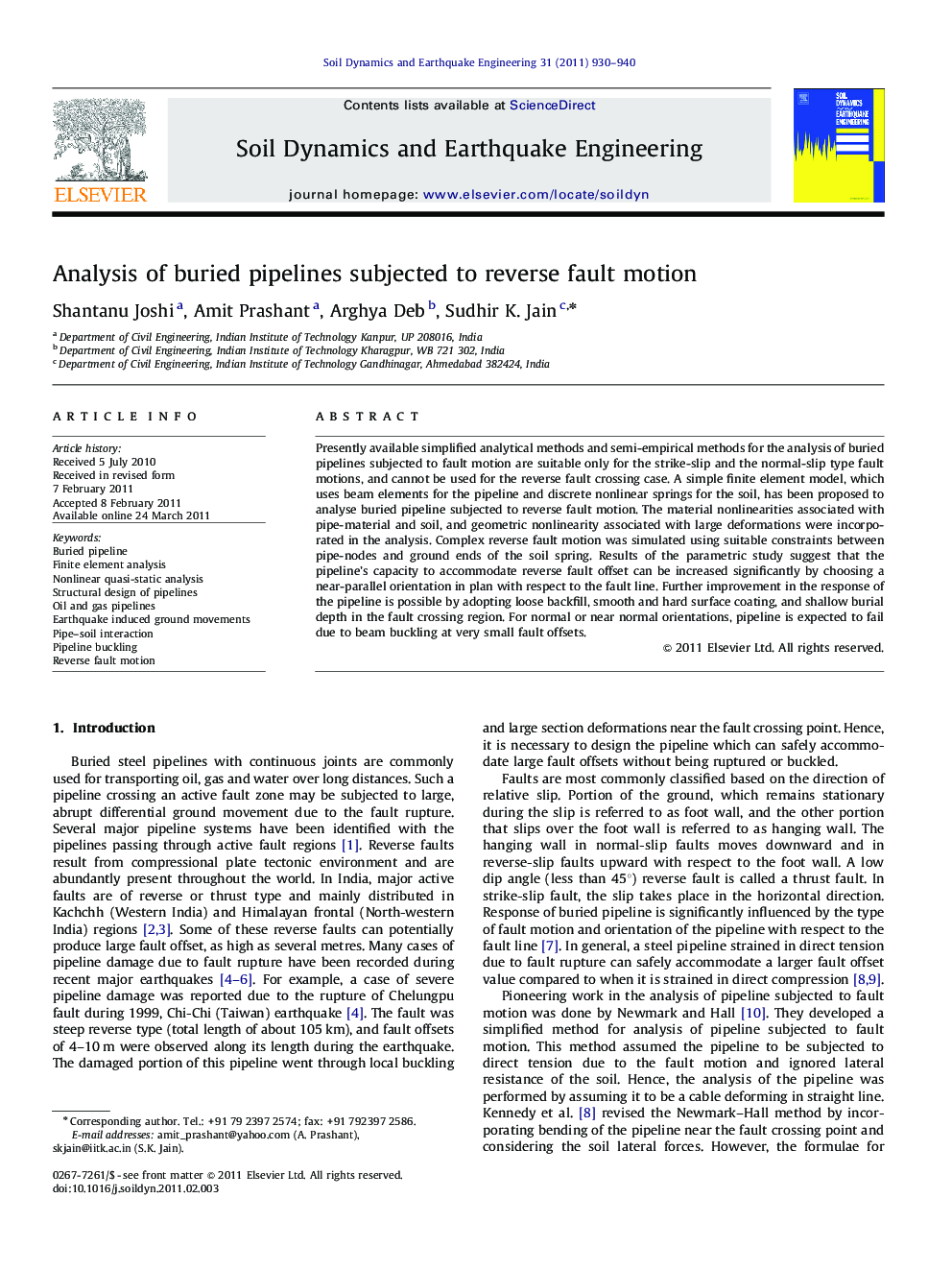| Article ID | Journal | Published Year | Pages | File Type |
|---|---|---|---|---|
| 304540 | Soil Dynamics and Earthquake Engineering | 2011 | 11 Pages |
Presently available simplified analytical methods and semi-empirical methods for the analysis of buried pipelines subjected to fault motion are suitable only for the strike-slip and the normal-slip type fault motions, and cannot be used for the reverse fault crossing case. A simple finite element model, which uses beam elements for the pipeline and discrete nonlinear springs for the soil, has been proposed to analyse buried pipeline subjected to reverse fault motion. The material nonlinearities associated with pipe-material and soil, and geometric nonlinearity associated with large deformations were incorporated in the analysis. Complex reverse fault motion was simulated using suitable constraints between pipe-nodes and ground ends of the soil spring. Results of the parametric study suggest that the pipeline's capacity to accommodate reverse fault offset can be increased significantly by choosing a near-parallel orientation in plan with respect to the fault line. Further improvement in the response of the pipeline is possible by adopting loose backfill, smooth and hard surface coating, and shallow burial depth in the fault crossing region. For normal or near normal orientations, pipeline is expected to fail due to beam buckling at very small fault offsets.
